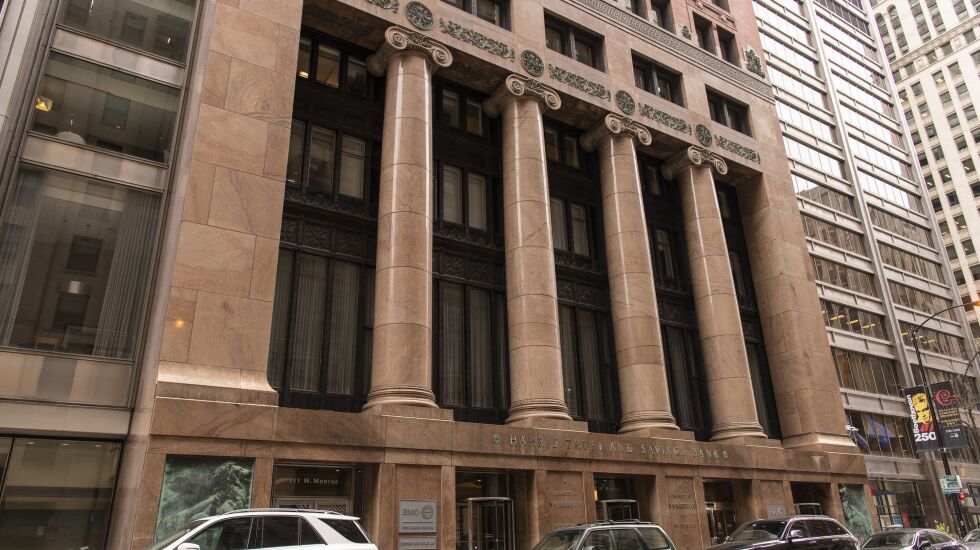
Mayor Brandon Johnson’s plan to use a record tax increment financing (TIF) surplus threatens to deprive developers of the subsidies they need to transform LaSalle Street office buildings into residential use, downtown City Council members warned Wednesday.
Alderpersons Bill Conway (34th) and Brendan Reilly (42nd) sounded the alarm about the future of the city’s “LaSalle Street Reimagined” plan during Wednesday’s budget hearing.
They sought assurances from Acting Planning and Development Commissioner Patrick Murphey that five development teams now fronting huge costs can count on the city to be their partner, even after Johnson uses a $434 million TIF surplus to wipe out 80% of the city’s budget shortfall.
To honor commitments made in the waning days of former Mayor Lori Lightfoot’s administration, TIF subsidies would need to cover a combined $307 million in costs for the five teams that promised to make 30% of all of the residential units they create affordable.
Reilly said his “back-of-the-envelope math” shows that $180 million of Johnson’s surplus would be drained from TIF districts that touch the Central Business District. That would leave LaSalle Street development teams holding the bag.
“They’ve been laying out a lot of costs on the front-end for architecture, design, on consultants, etc., trying to assemble financing. Yet, they’re not really sure whether this program is going to be there intact 100% or even 50%. What should we be telling these developers who own these properties on LaSalle Street about the future of that program?” Reilly said, noting that the city will be in “difficult financial straits” again next year.
Murphey tried to reassure Reilly, saying City Hall “would not obligate an applicant to a project that the city was going to commit themselves as being a financial partner, and not be able to support our commitments.” Murphey was appointed acting commissioner — even while continuing to serve as Chicago’s zoning administrator — to fill the void created by the resignation of Lightfoot’s planning czar, Maurice Cox.
“On LaSalle Street, projects that may be approved in the future [are] unlikely to be under construction within the next 12 months,” Murphey said.
In rapid-fire questioning that harkened back to his days as a prosecutor, Conway sought to show that his local TIF would be left with just $6.5 million after Johnson declares his record surplus.
“This is not the day or year that we want to be draining LaSalle Street TIF. ... Every city in the world needs to rethink its central business district,” Conway said. “It can’t just be a place where people work, but a place to live and eat and shop. We were considered a front-runner in that work.”
“It seems we are doing an about-face and, frankly, pillaging the LaSalle Street TIF in one-time revenue sources ... to balance this budget. ... This will back up projects to 2025 potentially,” Conway said, “will delay over 1,000 units from coming on line, including hundreds of affordable units. ... It’s also clear that the projections going forward for this TIF are based on questionable, if not fantastical, tax revenue projections.”
Johnson’s plan to make $1 billion worth of “investments in people” bankrolled by $800 million in new or increased taxes has faced heavy resistance from the business community.
He used the $434 million TIF surplus to postpone the day of reckoning and still deliver on his promise to hold the line on property taxes.
But Conway argued that his City Council colleagues “desperately need to rethink this taking of the LaSalle Street TIF at a time when investment in our central business district is most necessary.”
After unveiling his budget last week, Johnson was asked how his record surplus would impact plans to revive LaSalle Street.
Johnson did not answer the question directly, instead claiming that Chicago has the “fastest-growing downtown anywhere in the country,” and that Chicago has had “no comprehensive plan” for its central business district “in 20 years.”
Shortly before leaving office, Lightfoot signed off on two more projects to convert outmoded offices into residences to revitalize the LaSalle Street corridor.
Together, the proposals to renovate buildings at 105 W. Adams St. and 30 N. LaSalle St. represented investments of $320 million. They would add 600 housing units to the Central Loop area, almost half of them affordable.
The proposals joined three others city officials embraced in March 2022 — at 135 and 208 S. La Salle St. and 111 W. Monroe St.
In all, the five plans call for more than 1,600 housing units in the Loop, around 600 of them affordable, and more than $870 million in private investment.







